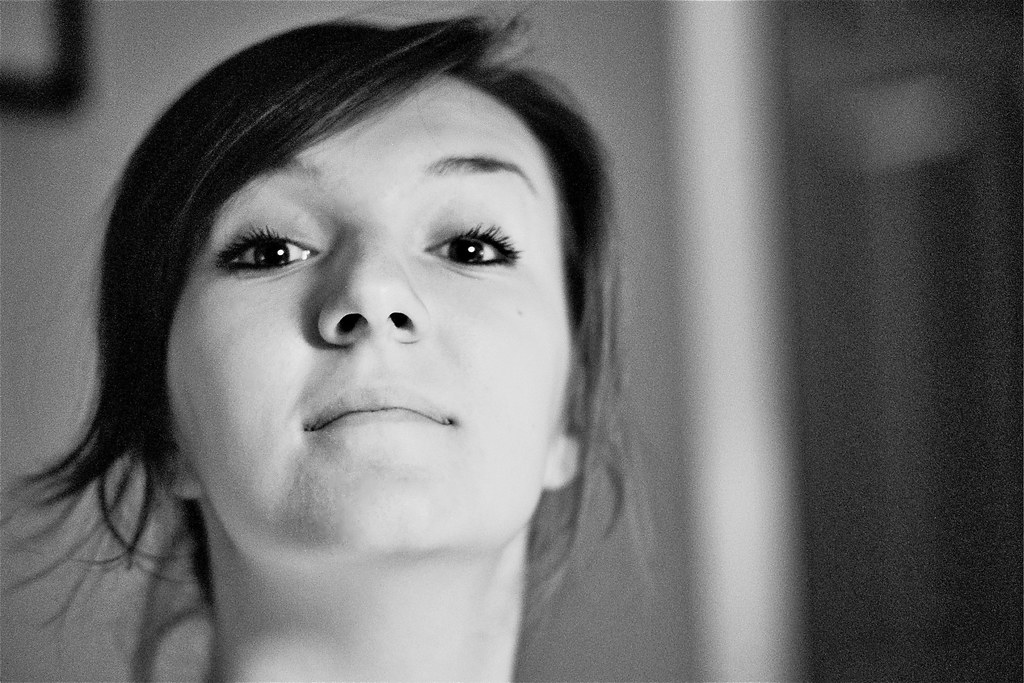Teuthida
Well-known
Focus Shift is problematic for those taking pictures of cats.
An interesting discussion of the relationship between focus shift, spherical undercorrection and bokeh here from Zeiss's director of lens design:
http://www.zeiss.com/c12567a8003b8b6f/embedtitelintern/cln_35_bokeh_en/$file/cln35_bokeh_en.pdf
Focus Shift is problematic for those taking pictures of cats.
That's cleared it up. So basically it's due to a poorly corrected/designed lens. Or a lens designed for one purpose which doesn't suit another. i.e. it wasn't designed to be used that wide open or that closed down but they stuck an aperture in there which could be used like that.
And basically I guess all lenses will suffer to an extent unless they perfect correction at all apertures and all distances which is unlikely.
... "Focus on the nose if stopped down" is an interesting approach.
Anyone who has used a stop down (metering, DOF preview, etc.) SLR, and observed critical focus, will have seen it.
So those who haven't seen it, have either a) bad eyesight, b) wide open SLR or RF use only, or c) have seen it, but haven't been bothered by slightly out of focus subjects.
I just tried that, and I don't agree .. one focuses at full aperture, then when stopped down the DOF covers any error ... oh, and I don't have bad eyesight, a gear fixation or any prints I'm ashamed of ...
ampguy said:Not questioning if DOF covers it for your photographic needs, but are you able to see the shift of exact focus from wide open to several stops down, with your particular setup?
Not everyone wants to take photos like yours, some want to know their exact single point of focus, and base their front and rear DOF based on that exact point, which changes with aperture, and which can be seen with say a Nikon F3 with center line image focusing screen, and bright enough light to stop down a fast lens and still focus.
Not questioning if DOF covers it for your photographic needs, but are you able to see the shift of exact focus from wide open to several stops down, with your particular setup?
Not everyone wants to take photos like yours, some want to know their exact single point of focus, and base their front and rear DOF based on that exact point, which changes with aperture, and which can be seen with say a Nikon F3 with center line image focusing screen, and bright enough light to stop down a fast lens and still focus.


As soon as you stop down "several stops", the exact point of focus becomes pretty much irrelevant and, in fact, hard to see in a print, let alone on a focusing screen. Moreover since whatever divergence is there is eaten by DOF at that point.
It's when you stop down less than "several stops" (one or two at most) that you may be able to discern it, or, in fact, probably not. In the end it doesn't really matter in practice with SLRs.
.............Get an M9-P and a Noctilux for something near $20.000,00 and you have to stop down to have a focused picture. I never though of that. So stupid I was using a Noctilux at full aperture. Who am I to think I can get a sharp picture. I just have to stop down, right?............
A few weeks ago I sent my M9-P to Leica because all my pictures taken at full aperture with 50/2, 90/2 APO, 75/1.4... all Leica lenses were out of focus. This was at close distance as well as medium or long distance.
Leica told me that I was having a focus shift issue????
I was told by Leica that this was absolutely normal. You see, the digital sensor is absolutely flat while the film in a M7 or any M film body is not. Well I am learning something.
Wait, I was advised to stop down to get a sharp picture, to play with the camera in order to find the right point of focus (may be they should remove the rangefinder and cut the cost).
Here's a test sample that I found interesting. Watch how the plane of best focus shifts away from the camera as you go from f/1.4 to f/2.8 on a Zeiss 50 f/1.4 ZF. (Mouse over the f-numbers at "Bokeh Fringing" near the bottom of this Photozone.de page to see the effect.)
Also note the different false coloration of the OOF foreground vs. the OOF background.
In this example and all others I can find, the increased DOF makes up for the shift, so the original focus point is still sharp. But... 1) The optimal focus plane does shift back, and 2) I can imagine a lens for which the increase in DOF does not cover the focus shift. That would be a bad design.
Focus shift is caused by the internet.
PKR said:When using an 8X10 for table top work, compositions were always made with the lens wide open. Once a basic placement of the subject was finished - the lens (210mm f 5.6 WA Schneider) was stopped down (22-45) and a "hot light" was used to refocus the lens, at a small aperture, for accurate FP and DoF (the camera Standards were readjusted for best DoF -Scheimpflug).
In most instances the "hot light" was a 500W Quartz. If the subject matter was sensitive to heat from the "hot light" (food photography) a series of very expensive 8x10 Polaroids would be used to confirm critical focus and DoF.
Focus shift is a real problem.
https://www.schneideroptics.com/ecommerce/CatalogSubCategoryDisplay.aspx?CID=169
ampguy said:Setup a photo where you're photographing the top of a fence from min distance out to 50 yards +.
Put a subject at about 15 yards next to the fence and focus on the eyes.
Take 2 photos at the same exposure values. First focused wide open, Second focused stopped down.
Compare the front parts of the prints (fence area near lens) and see if you can spot a difference.

